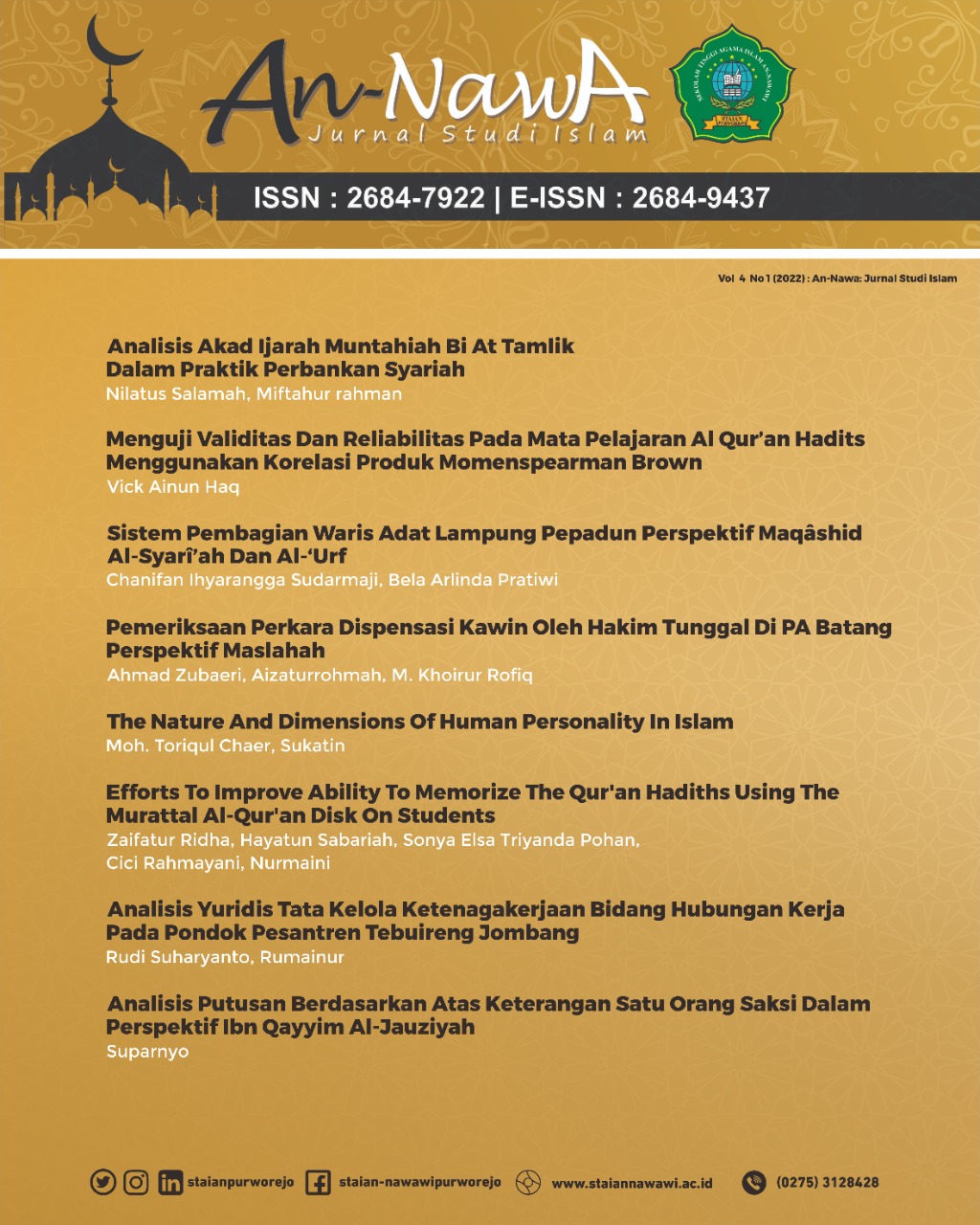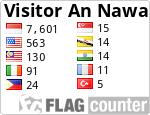Menguji Validitas Dan Reliabilitas Pada Mata Pelajaran Al Qur’an Hadits Menggunakan Korelasi Produk Momenspearman Brown
Abstract
Having a passion for learning is an important role in education, apart from being an encouragement for students to achieve optimal understanding, learning motivation also plays a role as a determinant of learning outcomes and student achievement. Therefore, a measuring tool is needed in the form of a learning motivation questionnaire, this will be done in testing the validity and reliability of the Al-Quran Hadith subjects. This study aims to describe the methods and steps of testing the validity of the questionnaire instrument, the reliability correlation test coefficient and the reliability test. The method used is a qualitative approach, by collecting data, calculating and analyzing data. The results of this study (1) find out how to measure reliability with internal consistency, the split half method, using the moment product formula Spearman Brown (2) find the level of validity of the questionnaire instrument which is declared good, namely 0.682, showing the coefficient of reliability correlation exceeds the product moment value of 0.725 and the reliability test was stated to be reliable with a high level of 0.841 (3) that the evaluation instrument, scoring administration instrument and answers from students were factors that influenced validity.
References
Jurnal
Al Hakim, Riko, Ika Mustika, Wiwin Yuliani. (2021) “Validitas dan Reliabilitas Angket Motivasi Belajar”, Jurnal Fokus (4),4, 263-268.
Effendi, Mursilah, Mujiono, (2018) “Korelasi Tingkat Perhatian Orang Tua dan Kemandirian Belajar dengan Prestasi Belajar Siswa” Jurnal Titian Ilmu (10),1. https://doi.org/10.30599/jti.v10i1.131.
Jannah, Nilda Miftahul. (2021) “Konsep Uji Validitas dan Reliabilitas dengan Menggunakan SPSS” diakses pada 21 Maret 2022 https://osf.io/v9j52/, https://doi.org/10.31219/osf.io/v9j52
Matondang, Zulkifli. (2009) “Validitas dan Reliabilitas Suatu Instrumen Penelitian”, Jurnal Tabularasa (06),1.
Tavakol, M. & Dennick, R. (2011). Making sense of cronbach’s alpha, International Journal of Medical Education(2),1. https://doi.org/10.5116/ijme.4dfb.8dfd
Yusup, Febrianawati. (2018) “Uji Validitas dan Reliabilitas Intrumen Penelitian Kuantitatif”, Jurnal Tarbiyah (7),1. 17-23, https://doi.org/10.18592/tarbiyah.v7i1.2100
Buku
Arikunto, Suharsimi. (2010). Prosedur Penelitian Suatu Pendekatan Praktik. Jakarta: Rineka Cipta.
Hatum, A. (2010). Next Generation Talent Management: Talent Management to Survive Turmoil. London: Palgrave Macmillan.
BAPM. (2008) Instrumen Penelitian, tk: tp.
Fraenkel, Jack R., Norman E.Wallen. (1990). How to Design and Evaluate Research in Education.
Sudjana, Nana. (2004) Penilaian Hasil Proses Belajar Mengajar, Bandung: Remaja Rosdakarya.
Sugiyono. (2014). Statistika untuk Penelitian. Bandung:Alfabeta.
Suryabrata, Sumadi. (2000), Pengembangan Alat Ukur Psikologis, Yogyakarta: Andi












